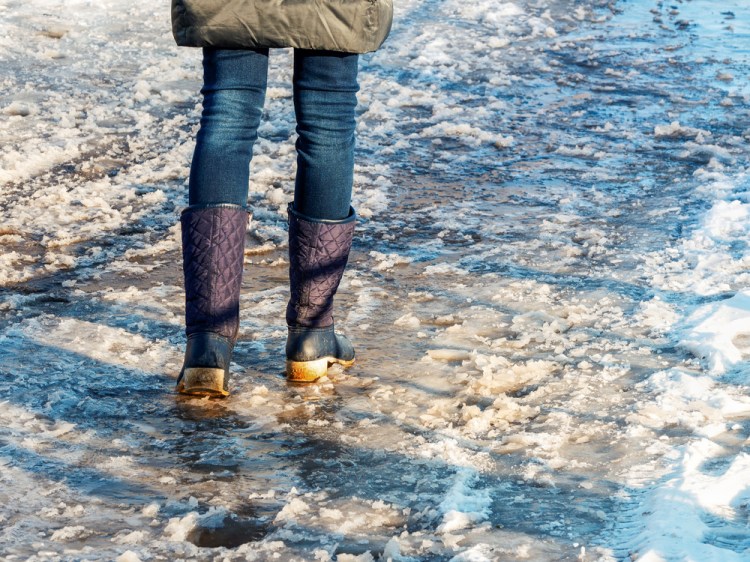Removing snow and ice after a storm can be time-consuming and backbreaking. In fact, over 800,000 patients a year are hospitalized because of a fall injury, and those rates rise every year, according to the Centers for Disease Control and Prevention.
Here are ways to keep yourself, your family, your neighbors, and visitors safe from ice-related accidents this winter.
TRADITIONAL ROAD SALT
Yes, we all know how to use simple, inexpensive, and effective road salt in the winter. Spread it around and it lowers the freezing point of nearby water, accelerating how fast the ice melts.
But are you aware of the environmental impact of using it around your home?
First, road salt can get into water. In fact, 84% of urban streams had chloride concentrations that substantially increased when using road salts, according to the United States Geological Survey.
Second, road salt can be toxic to plants, wildlife, and pets. The two most common pet injuries come from walking on salt or eating it (often when licking off paws), according to the American Society for the Prevention of Cruelty to Animals. That means you will need to stop a pet from licking melted snow and wipe off paws after coming inside. The ASPCA also warns that salts that claim to be pet-friendly may have safer ingredients but can still cause health problems if pets eat them.
So, road salt is an easy de-icer when used sparingly or mixed with sand to dilute and add grip.
CALCIUM CHLORIDE
Compared to road salt, calcium chloride performs better at lower temperatures, requires less coverage, positively affects the nearby soil, and is gentler on pets’ paws. Another advantage is that calcium chloride releases heat when mixed with water, releasing heat for a faster and more effective melt instead of just lowering water’s freezing point.
The drawbacks? It is more expensive than rock salt, harmful to pets if ingested, and can damage your car if you don’t wash it off.
DIY DE-ICING SOLUTION
You can make a de-icing spray using ingredients around the house, according to Kitchn. This solution is safe for concrete and pets, and the diluted solution won’t harm your plants or lawn. To make this solution, combine:
- 1/2 gallon of warm water,
- 1 teaspoon of blue dish soap
- 1 tablespoon of rubbing alcohol
Using a landscape or hand sprayer, spray the mixture onto your driveway after a snowstorm to melt the ice.
You can also use this solution to speed up ice scraping on your car’s windshield and windows. But even more effective with cars is to preemptively place cardboard or drape towels across the windshield to prevent ice from forming.
SNOW MELTING MAT
Snow melting mats use electricity and heat-conductive materials to melt snow and provide a slip-proof walkway. They are available as external mats that you can lay on top of the driveway. You can also insert them into your driveway when you pour the concrete. These mats make ice removal effortless and effective.
LUBRICANT AEROSOL SPRAY
To prevent your locks from freezing, spray them with lubricant like WD-40 before wet or cold weather. The spray will prevent ice from forming for a few days.
Comments are not available on this story.
Send questions/comments to the editors.


